The Best Plant-Based Diet in South Africa: Ultimate Guide for 2025
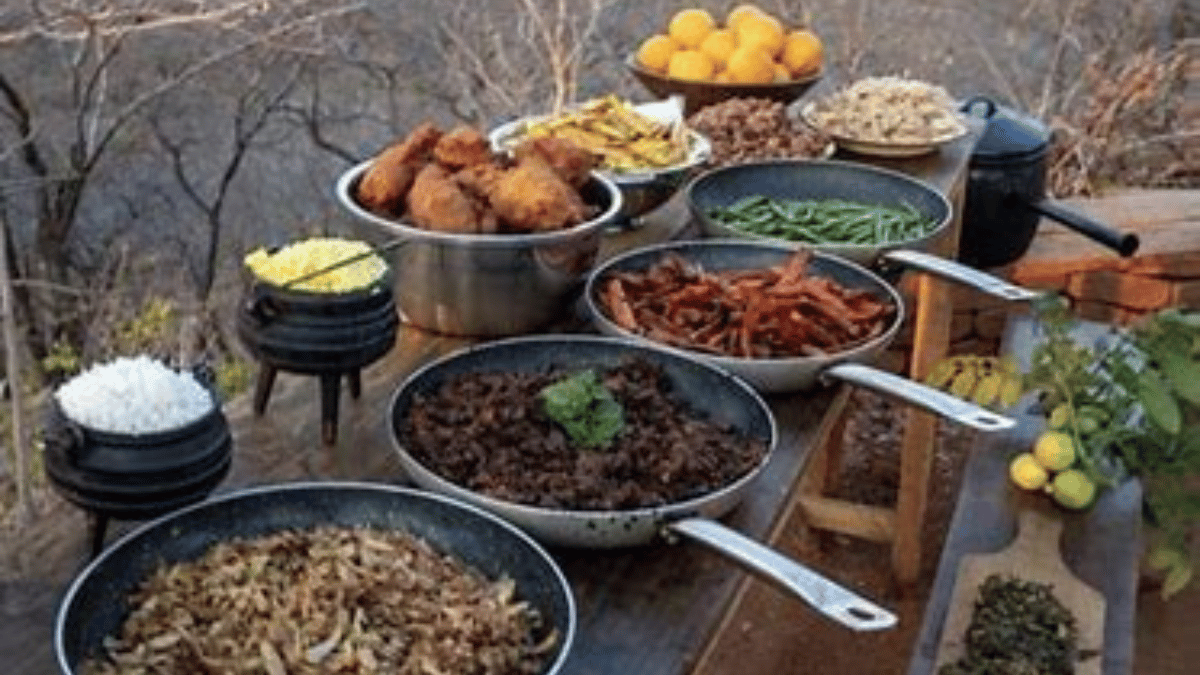
This guide will teach you about a plant-based diet in South Africa. It covers local ingredients and cultural factors.
Are you looking to go plant-based in South Africa?
You’re not alone!
I was amazed to learn that, since 2020, people here have increased their consumption of plant-based food by 45%.
And let me tell you, it’s been incredible watching this transformation happen right before my eyes.
“Plant-based eating in South Africa is beautiful.
“It fits perfectly with our indigenous food culture,” says Chef Mokgadi Itsweng, a top expert in plant-based cuisine.
“Our ancestors knew the power of plants. “They used morogo, amadumbe, and other amazing Indigenous ingredients in their diets long before it was trendy!”
If you’re curious about African plant-based dishes, I’ve got you.
I’ve got you if you want to make sustainable food choices or explore a new food scene.
Let’s explore everything you need to know about a plant-based diet in South Africa.
We’ll discuss the best local ingredients. Then, we’ll prepare your first plant-based braai!
Understanding Plant-Based Eating in the South African Context
Do you know what I love most about plant-based eating in South Africa?
It’s how deeply rooted it is in our heritage!
My grandmother told me stories. Her mother would gather wild morogo (African spinach) and mix it with pap to make excellent meals. No meat is needed – just pure, wholesome plant goodness.

I’ve learned much about plant-based eating in our unique South African context.
Let me break it down.
Traditional Roots
After months of research, I found it fascinating. Many traditional African communities ate plant-based primarily diets!
The meat was for special occasions. Everyday meals were grains, legumes, and native vegetables.
Who knew we were plant-based pioneers?
On a visit to my relatives in Limpopo, my aunt showed me their amazing dishes. They use cowpeas, pumpkin leaves, and sorghum.
Generations passed down the recipes.
The Urban Revolution
Living in Joburg, I’ve watched the plant-based scene explode! Just five years ago, I struggled to find vegan options when eating out.
Now?
There’s a new plant-based spot opening practically every month!
From Braamfontein’s busy markets to Melville’s trendy streets, I see more young South Africans embracing plant-based eating with their unique twist.
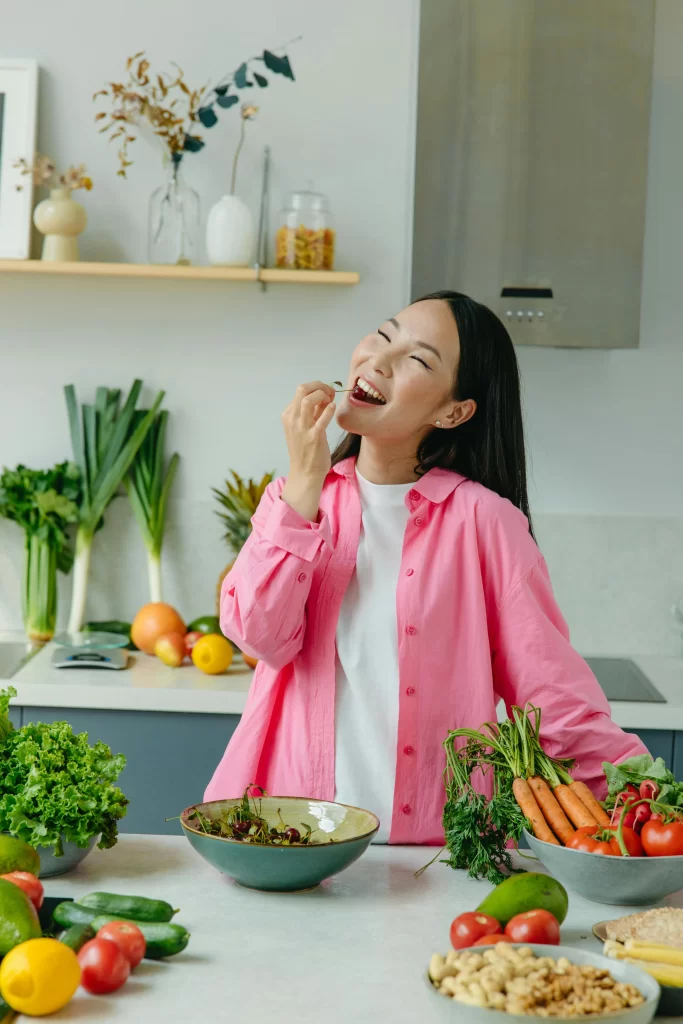
by Yaroslav Shuraev, (https://pexels.com/@YaroslavShuraev)
A Cultural Shift
Here’s something interesting I’ve noticed – we’re not just copying Western vegan trends. Instead, I’m seeing this beautiful fusion happening. Local chefs are taking traditional dishes and giving them a plant-based twist.
The other day, I tried a mushroom-based umngqusho at a new restaurant in Cape Town, and honestly?
It was mind-blowing!
We’re writing our own plant-based story, the South African way.
The Numbers Tell the Story
Here are some mind-blowing stats: plant-based food consumption is up 45%.
Also, according to recent market research I’ve been following, local plant-based food production has increased by 35% since 2022.
As someone who’s been part of this movement, I can tell you – this isn’t just a trend. It’s a transformation of how we think about food.
Looking Forward
My writing on food and sustainability shows that plant-based diets in South Africa can solve our health and environmental problems.
Plus, it’s making traditional ingredients cool again!
When did you last see amadumbe (African potato) trending on Instagram? Because I’m seeing it everywhere now!
The best part?
We’re just getting started.
Each week, I find new local brands and restaurants.
They are food innovators pushing the limits of plant-based African cuisine.
It’s exciting to be part of this movement, and I can’t wait to share more about how you can, too.
What about its ingredients?
Essential South African Plant-Based Ingredients
I’ve found some incredible plant-based ingredients in our South African backyard!
After years of experimenting in my kitchen and chatting with farmers at markets, I’ve created my ultimate guide to must-have South African plant-based ingredients.
Local Legumes – Our Hidden Gems!
Can we talk about sugar beans for a minute?
These little powerhouses are seriously underrated! I use them in everything from traditional curries to my weekly meal prep.
And don’t even get me started on cowpeas. My friend’s grandmother showed me how to cook them with wild spinach and spices.
Pro tip: Soaking them overnight with a bay leaf makes them tastier and easier to digest.
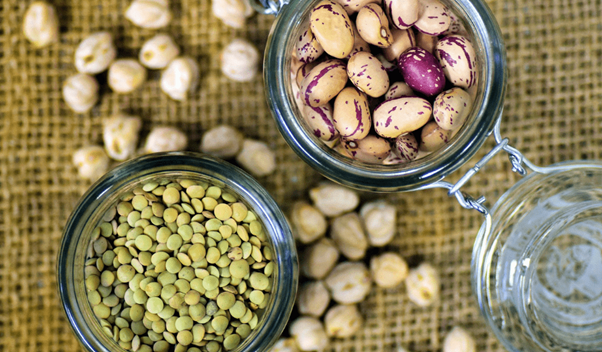
Indigenous Veggies That Changed My Life
Remember when I thought spinach was just spinach?
Then I discovered morogo, and wow – game changer!
I grab mine from the ladies who sell it at the taxi rank near my house in Pretoria, and the flavour is incredible.
My favourite combo is sautéed morogo with garlic and some peri-peri (I like it spicy!).
And amadumbe?
These African potatoes saved my plant-based journey when I was craving something creamy and satisfying.
I mash them just like regular potatoes, and honestly? They’re even better!
Plus, amadumbe is packed with nutrients I struggled to find when I started this journey.
Grains That’ll Make You Forget About Rice
I love rice as much as anyone, but have you tried sorghum lately?
Initially, I was sceptical, but now it’s a staple in my pantry. Its nutty flavour works with everything.
The other day, I made a sorghum pot with wild mushrooms and thyme – even my meat-loving dad went back for seconds!
Millet is another favourite of mine. I buy it in bulk from my local African goods store, and it’s become my go-to breakfast. I cook it with cinnamon and coconut milk – trust me, it beats oatmeal any day!
Protein Sources That Pack a Punch
When I went plant-based, the first question everyone asked was, “But where do you get your protein?”
Well, let me tell you about my protein-packed pantry!
I’ve fallen in love with local options, like bambara groundnuts and marama beans. They are even better than the usual suspects, like lentils and chickpeas (which are great!).
Here’s my weekly shopping list of protein sources:
- Locally grown soy products. There’s a fantastic tofu maker at the Bryanston Organic Market!)
- Various beans (sugar beans are my favourite, so they are versatile!)
- Pumpkin seeds (I buy them in bulk and toast them with African spices).
- African groundnuts (perfect for snacking and adding to stews).
Money-Saving Tip:
Buying from local farmers’ markets gives me the freshest ingredients and often saves me money. The amadumbe I get from the market in Durban is half the price of supermarket versions!
A Quick Note About Seasonality
On this journey, I’ve learned the importance of eating with the seasons. Not only is it cheaper, but the flavours are incredible! I keep a little calendar on my fridge, noting when local veggies are at their peak.
Right now, I’m in heaven because it’s wild mushroom season in the Eastern Cape!
These ingredients aren’t just “alternatives” to Western plant-based products. They’re the real deal, packed with nutrition and history.
They’ve sustained South African communities for generations. I love that we’re finally giving them the spotlight they deserve!
Want to start incorporating these ingredients but feeling overwhelmed?
Start small!
Pick one ingredient from this list and experiment with it this week.
I’d love to hear which one you choose from your nearest supermarket and what you create with it!
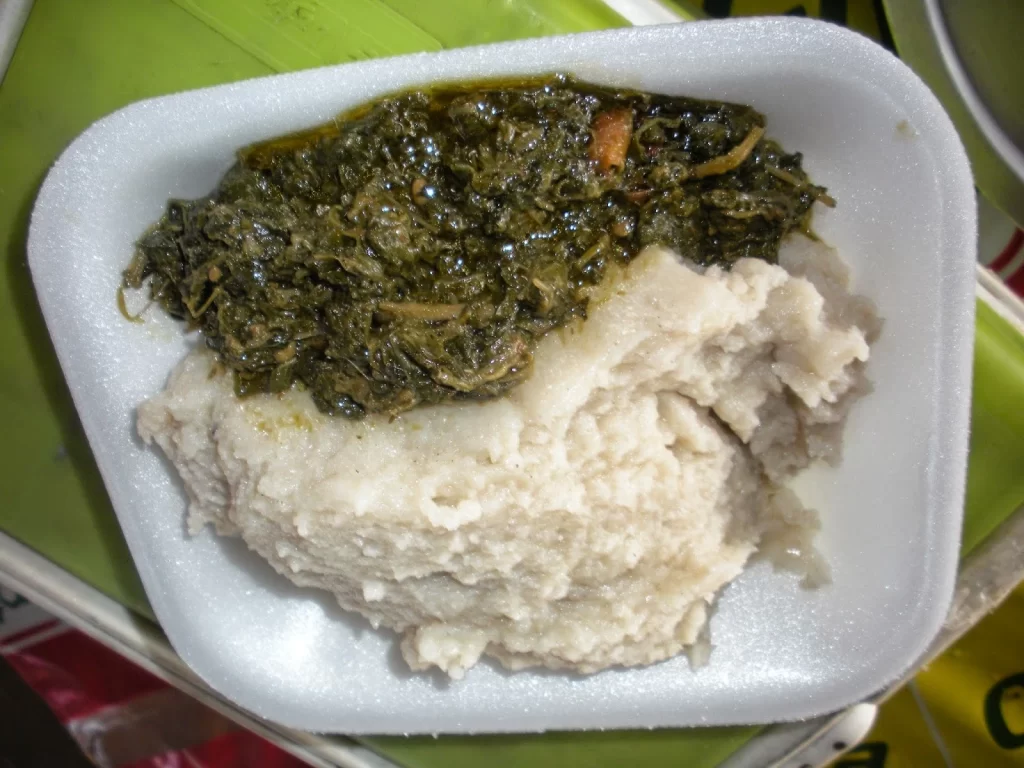
Navigating Supermarkets and Markets
Let me be your guide to plant-based shopping in South Africa! After three years of hunting down the best deals and hidden gems, I’ve got some serious insider tips to share. Trust me, I’ve made all the rookie mistakes, so you don’t have to!
Big Chain Supermarkets: Your One-Stop Shop
You should’ve seen me when I first started – wandering around Checkers like a lost soul!
But now?
I’ve got this down to a science.
Here’s where I find the best plant-based goodies at our major retailers:
Woolworths has seriously upped their game!
I almost dropped my basket last week when I discovered their new plant-based section.
Pro tip: I always hit their reduced section around 4 PM. That’s when they mark down fresh produce. I’ve scored amazing deals on mushrooms and avocados.
Pick n Pay is my go-to for staples.
Can we talk about their PnP plant-based range?
The prices are much better than imported brands. Between you and me, their vegan sausages are tastier!
I’ve noticed they’re stocking more local brands lately. Last month, I found a fantastic South African-made tempeh in the veggie section.

My Local Market Adventures
Oh. My. Word. You’re missing out if you haven’t visited your local farmers’ market yet! I spend every Saturday morning at the Bryanston Organic Market, and it’s become my happy place.
There’s a fantastic ouma who sells incredible organic morogo. She even taught me how to prepare it!
Money-Saving Secrets (Because Going Plant-Based Shouldn’t Break the Bank!)
Listen, when people tell me eating plant-based is expensive, I laugh. Want to know why? Because I’ve cracked the code! Here are my tried-and-true savings strategies:
- I buy my dry beans and legumes from Atlas Trading in Cape Town or similar spice shops in other cities. Their prices are half of what supermarkets charge.
- Most of my fresh produce comes from local markets – I go an hour before closing for the best deals.
- I joined a WhatsApp group for my local food-buying club, where we bulk-buy together.
- I’ve learned which supermarkets have specials on which days. Checkers does Weird Wednesday deals that sometimes include plant-based items!)
Reading Labels Like a Pro
Okay, confession time: I used to spend ages reading every single label!
Now I’ve got a system.
The first thing I check?
The allergen information is in bold. If it mentions eggs or dairy, I will move on. Quick and easy!
I wish someone had told me this earlier. Some local products might lack the fancy “vegan” certification. But they are plant-based.
I keep a running list of “accidentally vegan” South African products on my phone.
You would be surprised by how many traditional foods naturally fit the bill!
My Favourite Hidden Gems
Can I share my secret spots?
There’s this fantastic Indian spice shop in Fordsburg where I get all my lentils and spices.
I found a tiny Korean grocery store in Cape Town. It sells incredible mushrooms and seaweed at great prices.
Time-Saving Tips
I’ve learned to plan my shopping route like a pro.
I start at the farmers’ market for fresh produce, then hit the spice shop for dry goods, and finally, I finish at the supermarket for any packaged items I need.
It might sound like a lot, but it saves me time and money in the long run.
Remember when I used to spend hours hunting for speciality items?
Now I know exactly where to find everything, and I’m passing these shortcuts on to you!
Whether you’re new to plant-based eating or a pro, there’s always something to discover in South Africa’s fantastic food scene.
Have you found any fantastic plant-based shopping spots in your area?
I love finding new places and sharing tips with fellow plant-based fans!
Plant-Based Alternatives to Traditional South African Dishes
I want to share my journey. I’m turning traditional South African dishes into plant-based masterpieces!
When I first started, I was worried I’d have to give up all my favourite comfort foods. Spoiler alert: I didn’t!
After countless kitchen tests and funny failures, I’ve cracked the code for veganizing our local dishes. They’re my favourites.
Bobotie: My Plant-Based Pride and Joy
Oh, you should’ve seen my first attempt at plant-based bobotie – it was a disaster! But after experimenting with different ingredients, I finally nailed it.
My secret?
I use a mix of lentils and mushrooms for the base.
Here’s the game-changer: I add grated butternut for a perfect egg-like topping.
When I served it to my traditional aunty, she asked for the recipe!
Potjiekos Reinvented
Listen, I know what you’re thinking – potjiekos without meat?
Trust me, I was sceptical, too!
But, my potjie of mushrooms and sweet potatoes got even the hardcore meat-eaters at our last family gathering to ask for seconds.
The trick I discovered is to layer those umami flavours!
I use different mushrooms, lots of herbs, and a bit of soy sauce to create the deep, rich flavour we all love about potjiekos.
Chakalaka and Pap – the Dynamo Duo
Good news: traditional chakalaka is already plant-based!
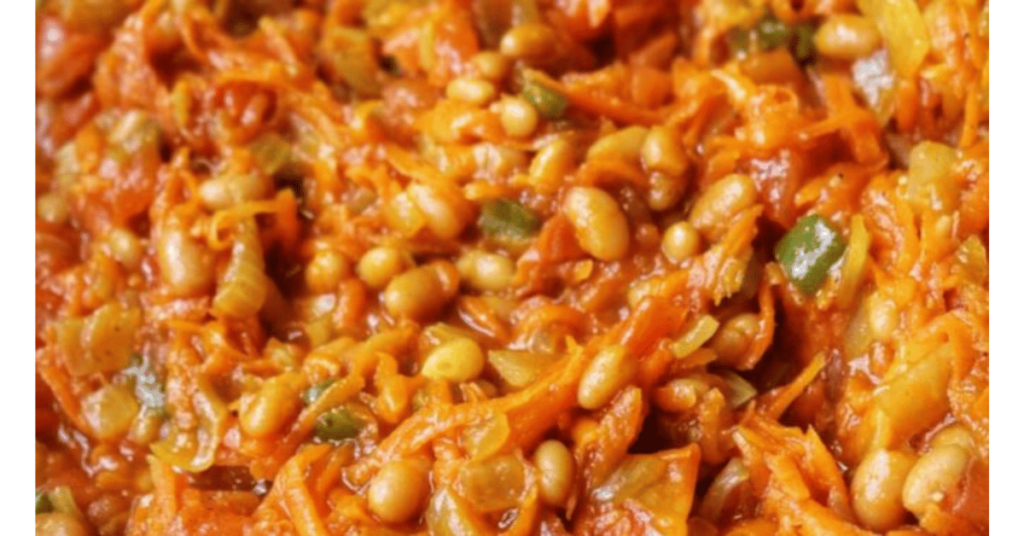
But I’ve supercharged mine by adding extra beans and sometimes chickpeas for protein. And pap? Still perfect, just as it is!
I often make a big batch of chakalaka on Sundays, which tastes even better the next day.
Pro tip: I add a handful of chopped morogo to boost the nutrition and give it that authentic South African twist.
My Take on Township Classic
You know what excites me?
Reimagining township classics!
I’ve created a mean soy mince mogodu that’ll blow your mind. And my braised cabbage with dumplings? Pure comfort food, just like my gogo used to make, but entirely plant-based.
Sweet Treats with a Twist
Guys, let me tell you about my journey with Koeksisters!
It took me six attempts to perfect a plant-based version, but now I’ve mastered it. I use coconut milk instead of dairy; nobody can tell the difference!
And Malva pudding?
I make mine with aquafaba (the liquid from chickpea cans—magical stuff!) instead of eggs, and it’s as sticky and delicious as the original.
My Weekly Staples
Here are some dishes I make regularly:
- Sunday: My famous plant-based bobotie
- Monday: Leftover bobotie with yellow rice (because it tastes even better the next day!)
- Tuesday: Mushroom potjiekos (perfect for cold evenings)
- Wednesday: chakalaka and pap (quick and easy after work)
- Thursday: Butter bean curry (my mom’s recipe, veganized)
- Friday: Plant-based braai with mushroom sosaties
- Saturday: Experiment day! (This is when I try veganizing new traditional recipes)
Kitchen Disasters That Turned Into Wins
Can I share something funny?
My first attempt at plant-based boerewors was… interesting.
After some tweaks and much taste-testing by my patient’s family, I created spiced bean and mushroom sausages. They capture the familiar Boerewors flavour and are now a staple at our family braais!
Keeping Traditions Alive
What I love most about this journey is how it’s helped me connect even more deeply with our food heritage.
I spend hours chatting with older relatives about traditional ingredients and cooking methods. Then, I find ways to adapt them to a plant-based diet. It’s like being a food detective and chef all at once!
Recipe Development Tips
Here’s what I’ve learned about veganizing traditional dishes:
- Start with naturally plant-based traditional dishes (there are more than you think!)
- Focus on matching textures as much as flavours.
- Don’t be afraid to mix traditional and modern ingredients.
- Always respect the original dish’s cultural significance.
The best part?
These plant-based versions aren’t just “alternatives.” They’re delicious in their own right. Plus, they’re usually healthier and more environmentally friendly than the originals. Win-win!
Have you tried making any plant-based versions of traditional South African dishes?
I’d love to hear about your kitchen adventures. Share both the successes and the funny failures! I’ll tell you about my journey. I transformed traditional South African dishes into plant-based masterpieces!
Dining Out and Social Situations
Let me tell you about the social side of plant-based eating in South Africa. It’s been quite a journey!
From family breaks to business lunches, I’ve learned many tricks for making this lifestyle work.
Restaurant Scene: My Favourite Spots
Remember when finding plant-based options meant settling for a sad side salad?
Those days are gone! I’ve discovered some incredible spots across our major cities that’ll blow your mind.
There’s a fantastic place called Plant Café in Cape Town. I had the best breakfast of my life there. Their mushroom benedict is incredible!
And in Joburg?
Don’t get me started on The Greenhouse in Sandton – their plant-based bunny chow is better than the original (yes, I said it!).
Pro tip: I keep a running list of restaurants with great plant-based options on my phone. It’s such a lifesaver when friends ask, “But where can YOU eat?”
Traditional Restaurants: My Survival Guide
What about those traditional South African restaurants? Their menus are just meat, meat, and more meat.
Here’s what I’ve learned:
- I always call ahead – most chefs are super accommodating if you give them a heads-up.
- I’ve become best friends with the “sides” menu. You’d be amazed at the meals I’ve made by combining different side dishes.
- My secret weapon? Learning to say “Ngicela ukudla kwemifino kuphela” (I’d like only vegetable food) in several languages has opened many doors!
The Famous Family Braai
Let’s talk about the most significant challenge – the family braai! When I first went plant-based, my uncle thought I was crazy.
Now?
He buys mushrooms and corn for me. He even keeps a separate grid for my plant-based goodies!
Here’s what works for me:
- I always bring enough to share. My marinated mushroom skewers have converted many sceptics!
- I have a special container for my plant-based items to avoid cross-contamination.
- I focus on the sides – have you tried my seven-bean chakalaka? It’s become a family favourite!
Social Gatherings: Navigating With Grace
I wish someone had told me this earlier: it’s all about preparation and communication.
When I’m invited to someone’s house, I always:
- Offer to bring a dish (or two!)
- Let the host know about my dietary preferences well in advance
- Eat a small snack beforehand, just in case
- Focus on the company rather than the food – that’s what these gatherings are really about!
Finding Your Tribe
You know what’s made this journey so much easier? Finding my plant-based community!
I’ve joined several local groups:
- The Cape Town Vegan Meetup (we have monthly potlucks!)
- My local plant-based cooking club
- A WhatsApp group for sharing restaurant recommendations
- The Johannesburg Plant-Based Market vendors’ community
These connections have been incredible. They are for sharing tips and recipes. But they are also for when you need someone who gets it.
Handling Questions and Comments
Let me tell you about my favourite strategy for dealing with inevitable questions. When someone asks, “But where do you get your protein?” (and trust me, they will), I smile and say, “The same place the elephant gets its protein – from plants!” It usually gets a laugh and opens up a real conversation.
Business Meetings and Work Events
This was tricky at first, but I’ve got it down now.
I always check the menu if we’re going to a restaurant. I contact the organizers early for catered events.
Most are understanding. Last week, they arranged a plant-based option for our office party. And guess what?
Half the office wanted to try it!
My Top Tips for Success After countless social situations here’s what I’ve learned:
- Always prepare (snack bars are your friend!))
- Stay positive and focus on what you CAN eat
- Share your food – it’s the best way to show how delicious plant-based eating can be
- Remember your ‘why’ – it helps during challenging situations
The best part?
I’ve noticed more and more people are curious about plant-based eating.
I was the ‘difficult’ one. Now, I’m the go-to for healthy eating advice!
Is anyone else navigating social situations on a plant-based diet?
What are your go-to strategies?
I’d love to hear your stories!
Health and Nutrition Considerations
I’ve researched and learned from mistakes about staying healthy on a plant-based diet in South Africa.
Trust me, you don’t have to!
When I first started, I felt overwhelmed trying to figure out if I was getting enough nutrients. Now? It’s second nature!
Meeting Those Nutrient Needs
You can get all your nutrients from plants. But you need to be strategic about it.
After consulting my dietitian (thanks, Sister Thandiwe at the wellness centre!), I’m all set with my nutrition.
Let me break down my daily must-haves:
- Protein: I combine lots of local beans, lentils, and peas throughout the day
- Iron: My morning smoothie always includes morogo or spinach
- Calcium: I’ve fallen in love with fortified plant milks and sesame seeds
- B12: This is the one I supplement – I found an affordable local brand at Clicks
- Omega-3s: I sprinkle ground flaxseeds on practically everything!
My Local Superfood Discoveries
You won’t believe the nutritional powerhouses I’ve found here at home!
Did you know that morogo has more iron than spinach?
Fibre and minerals pack Amadumbe.
I’ve started a “nutrition diary” of local ingredients. It’s amazing how many nutrients you can get from traditional African foods.
Listen to Your Body
Can I share something personal? When I first went plant-based, I did not eat enough calories. I was hungry all the time and blamed the diet!
I just needed to eat more – plant foods are often less calorie-dense than animal products.
Now, I make sure to include plenty of filling foods like:
- Sweet potatoes (especially our local amadumbe)
- Avocados (when they’re not costing an arm and a leg!)
- Nuts and seeds (pumpkin seeds are my favourite)
- Whole grains like sorghum and millet
Supplements: The Real Deal
Supplements: The Real Deal
Let’s be honest – you’ll probably need some. Here’s what I take:
- B12 (this is non-negotiable, folks!)
- Vitamin D (especially during winter)
- Iron (I check my levels regularly with my doctor)
Pro tip: A local supplement brand is way cheaper than the imports. It’s excellent, and they’re also certified by SAHPRA!
Common Challenges (And How I Solved Them)
Remember when I told you about my early protein panic? Here’s how I tackled the most common nutritional challenges:
The Protein Question
I track my protein weekly every few months to stay on track. My favourite protein-packed day looks like this:
- Breakfast: Oats with peanut butter and hemp seeds
- Lunch: Lentil curry with brown rice
- Dinner: Stir-fried tofu with vegetables
- Snacks: Roasted chickpeas and smoothies
Iron Absorption
Game-changer alert! I learned to pair iron-rich foods with vitamin C to boost absorption. I always add lemon to my spinach or orange segments to my bean salad.
The Energy Question
I laugh when people ask me about my energy levels—I’ve never had more energy!
But it took some tweaking to get here.
The key?
I eat regular meals, lots of whole foods, and proper portions. I feel lighter and more energetic now than I did before going plant-based.
Special Considerations for Athletes
As someone who runs marathons (okay, half marathons… working on it!), I’ve had to pay extra attention to my nutrition.
I work with a sports nutritionist who specializes in plant-based diets. We’ve created a plan that keeps me energized through all my training.
Monitoring Your Health
I get my blood work done every six months to ensure everything’s on track. Plus, showing my sceptical uncle that my iron levels are perfect is pretty satisfying!
Here’s my health-tracking routine:
- Regular blood tests (I mark them in my calendar)
- Food diary every few months
- Regular check-ins with my doctor
- Tracking how I feel (energy, mood, sleep)
The Best Part?
Since going plant-based, I’ve noticed some remarkable changes:
- Better digestion (goodbye, afternoon bloat!)
- Clearer skin (who knew?)
- More consistent energy levels
- Faster recovery after workouts
Everyone’s body is different – what works for me might need tweaking for you. The key is to listen to your body and adjust accordingly.
Have trouble figuring something out?
That’s what healthcare professionals are for!
Want to chat more about plant-based nutrition?
Ask me a question—I love sharing what I’ve learned on this journey!
Conclusion
Embracing a plant-based diet in South Africa is not only possible but also an exciting journey that connects us with our heritage and our future!
Combining old wisdom with modern nutrition can create a tasty, plant-based lifestyle honouring South African food culture.
Ready to start your plant-based journey?
Remember, every plant-based meal is a step toward better health and a more sustainable South Africa.

9 thoughts on “The Best Plant-Based Diet in South Africa: Ultimate Guide for 2025”